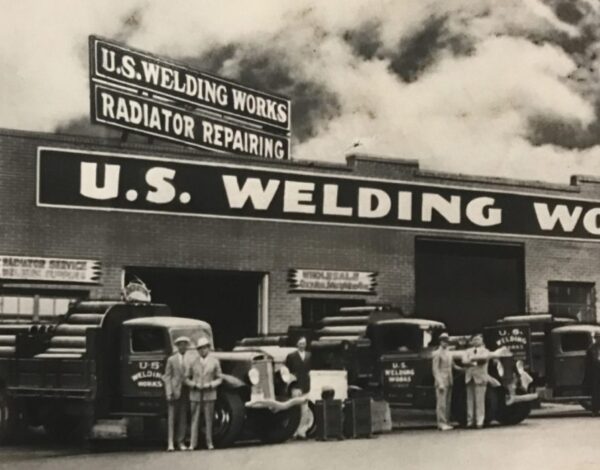

The Historic Truck Driver Shortage and the Hopeful Upswing
We’ve all seen the bare shelves, the “thank you for your patience” emails, and the months and months of waiting for building materials or medical supplies. The fact that there is a historic shortage in truck drivers is not breaking news. It existed prior to the pandemic, but as the economy has seen, the arrival of COVID-19 in 2020 only emphasized preexisting issues.
The American Trucking Association estimates as of January 2022, the US needs 80,000 more truck drivers in the field. This number could double by 2030. Their data states, apart from government and farming vehicles, 37.9 million trucks are deployed for businesses, carrying 72.5 percent of the nation’s freight. This blue-collar job may not seem important to some, but this career keeps the nation running, providing the most basic human needs of food and medicine. Truckers are the backbone of the economy, and for that we recognize their vitality and celebrate their contribution to our communities.
Potential Causes of the Trucker Shortage
There are a myriad of causes that have led to the driver shortage, with no singular situation shouldering the blame. While there has been much talk that the pandemic has created much of the issue when it shut down DMVs, halted driver training schools, led to offshore shipments becoming stuck in ports and production in nearly every industry stalling, the pandemic merely exacerbated an already existing issue.
Prior to the pandemic, the aging workforce saw a mass exodus of drivers retiring, perhaps a primary cause of the shortage. its nature, over the road driving (the kind you see crossing state lines) can be a solitary and at times a dangerous career choice resulting in a high turnover rate. Federal lawmakers and businesses are working together to lighten the load of truckers such as creating safer parking spaces to avoid parking on the side of the highway. They need safe parking spaces that aren’t on the shoulders of mountains, reimbursement for food and accommodation, and greater access to facilities. Both DOT and individual businesses are working in conjunction to meet these needs.
Truckers are regulated by the DOT for 11 hours of driving and no more than a 14-hour total shift. At the regulated time for driving or for the shift the driver must then take a 10-hour break before their next shift begins. It is not easy to calculate the optimal stopping point while on the road. Route optimization software and fleet management systems assist in calculating routes with accessible gas stations, rest stops, and hotels, making the job more comfortable. Supporting the well-being of drivers should be priority for those hiring, leading to better retention. Rocky Mountain Air Solutions has offered paid hotel room and per diem meal payment for over a decade.
Turning the Industry Around
The question remains: how can companies hauling freight appeal to younger generations to join their workforce? Well, the good news is that the average salary for truck drivers has been steadily increasing, seeing a $7,000 increase since 2013. The average salary currently sits at $53,000, and ample health insurance and PTO is usually a guarantee. For many, it is an opportunity to see the country, and to be part of something bigger.
More women are joining the industry (which is currently at 7 percent) than ever before, as many have been laid off during the pandemic and are seeking work with greater pay and benefits. Regional driving jobs are becoming more palatable for drivers who want to be home more often than traditional over the road trips which can take weeks of time away from their home.
As of February 7, 2022, there is now a national standard for all CDL drivers across all states. This Entry Level Driving Training course is for new CDL holders seeking a first-time licensure, or an upgrade in class (A or B). Having the same curriculum across the board will help jobseekers and training schools across the country leads to standardized knowledge and safer roads. Some regulations on age have lifted. Now, 18 to 21-year-olds can obtain a CDL but are required by federal law to remain inside state lines.
Technical colleges are ramping up CDL training courses, which are on average 4-5 weeks long (the clutches and the double brakes require greater precision and care to operate). A bittersweet reality is that these courses are quickly filling up. The desire and the demand to join an essential field, where job-security is pretty much guaranteed, is there.
Now Hiring CDL A and B Drivers at Rocky Mountain Air Solutions
At Rocky Mountain Air Solutions, we cherish our CDL A and B drivers who ensure each customer has the cylinder and bulk gases required to thrive. Our Class A CDL Regional drivers at Rocky Mountain Air can experience the Rocky Mountains, buttes, and canyons, and the West’s best cities on their journey.
We take care of our regional and city drivers by offering hotel reimbursement and meals per diem, health insurance, and 401k/profit sharing. All trucks are leased and maintained, and regional drivers are on the road no more than 3 nights per week.
Together, we make life better. Our professional drivers are the personal point of contact for our hospitals, restaurants, scientists, labs and manufacturers. Join us as part of the elite team of drivers who deliver the products that keep America producing. By joining Rocky Mountain Air, you’ll quickly become an expert in the myriad uses of atmospheric gas in a wide and ever-increasing market. If you like the vistas of the west with the freedom to listen to the perfect audiobook, podcast, or curated Spotify playlist on hand we may be your perfect career choice. Sounds amazing, right? For both positions, send inquiries/resume to payroll@ukw.86a.myftpupload.com.



